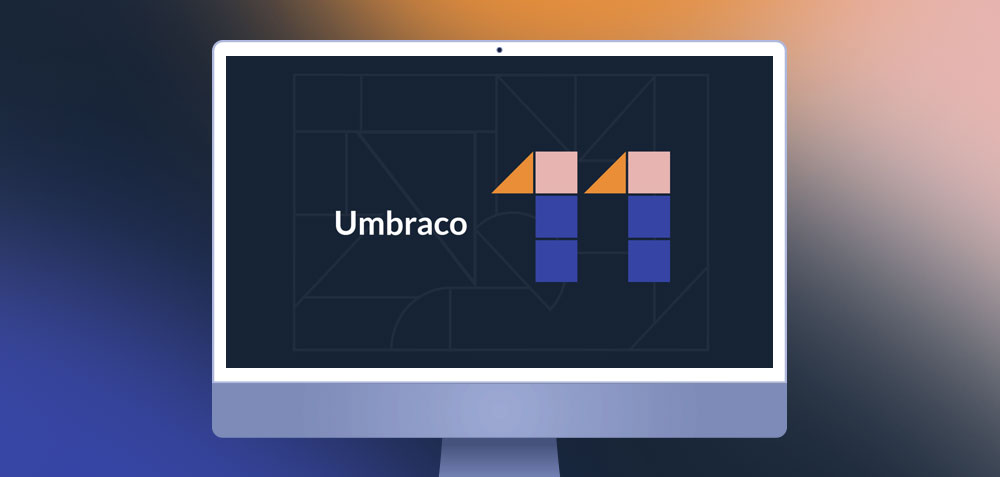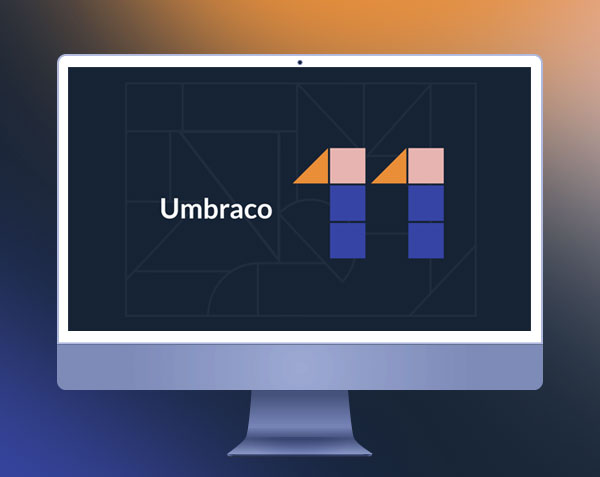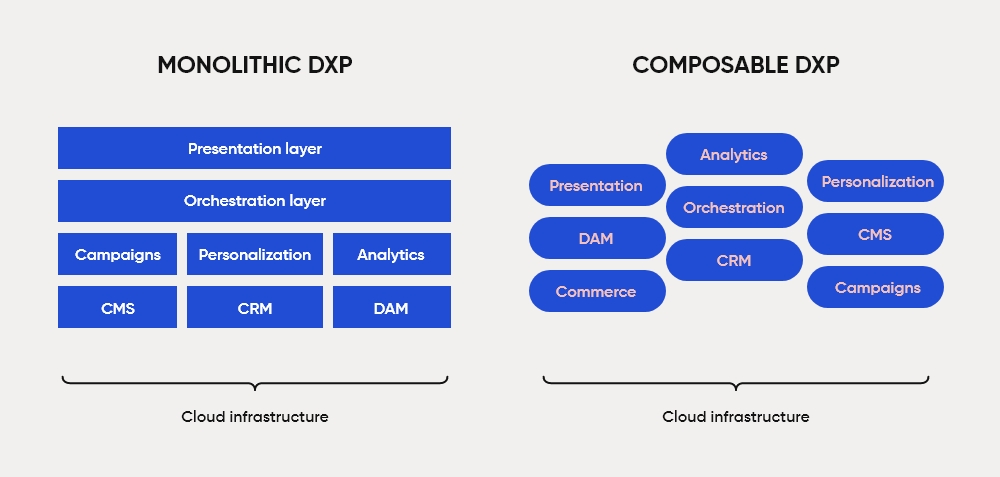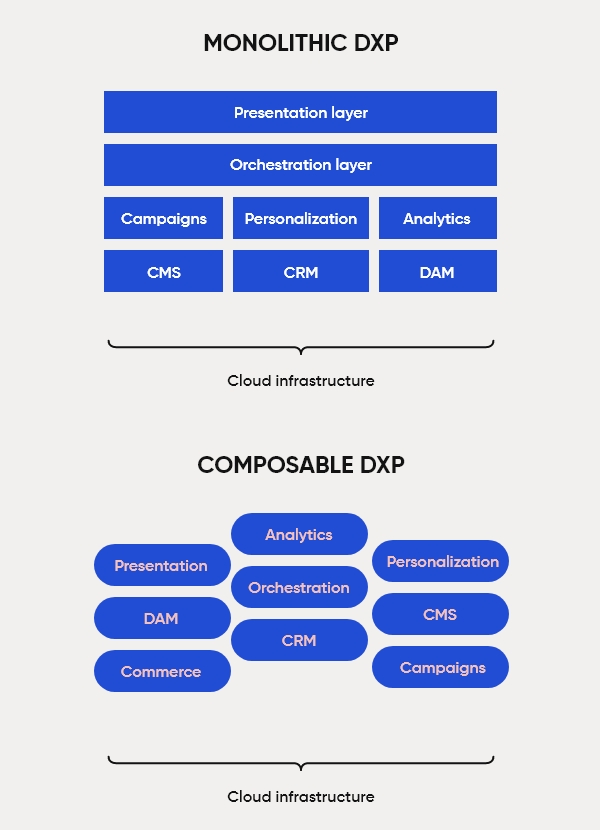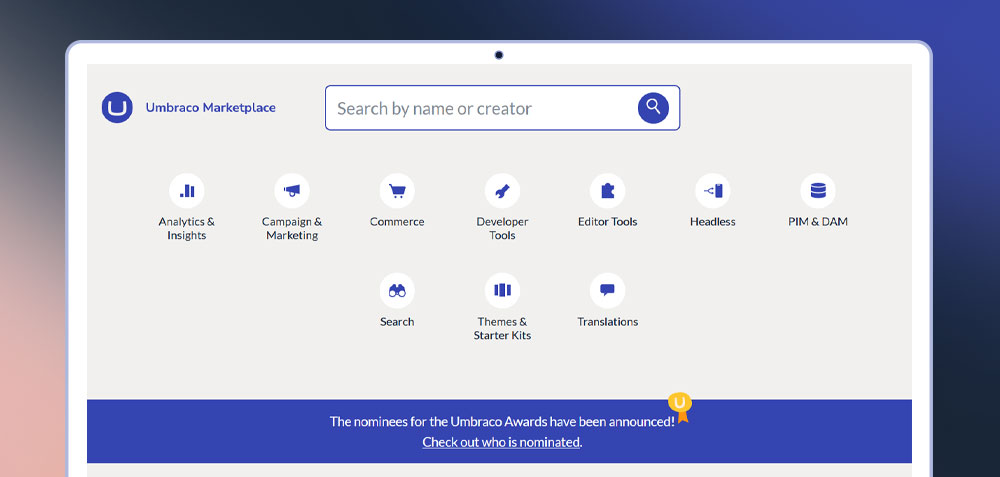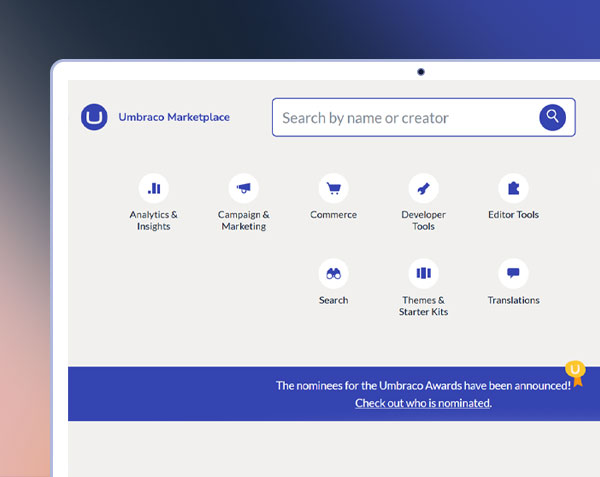The clock is ticking for Umbraco 7 and 8, approaching the "end-of-life," but the general future looks bright for the platform users. Composable DXP, headless solutions, and modernized back office editors are in store as Umbraco reveals its roadmap.
You probably have heard about the significant transformation that Umbraco 10 underwent, involving a major shift in the underlying Microsoft.NET framework on which it operates. This change presents a substantial technological shift and, thus, a challenge for developers assigned to migrating older sites. Umbraco 7 will reach its "end of life" by the end of September 2023, and Version 8 will follow in its footsteps in February 2024, but we have already covered this issue. For now, let's focus on the newer versions and the numerous benefits they bring to the table.
The new .NET 6 framework empowers Umbraco 10 and subsequent versions to become faster and more stable platforms, vastly enhancing the ability to deliver content to customers with unparalleled efficiency. Added features and the new version of C# are set to simplify the development process and improve productivity.
Security is predictability. Since the release of the Umbraco 10 in June 2022, we have enjoyed a stable and reliable platform with the assurance of regular major releases every six months and a guarantee of long-term support. Looking ahead, we can anticipate Umbraco's continuous evolution to enhance positive customer experience with innovative features.
Composable and headless - more than just tech buzzwords
Composable DXP is certainly a "hot ticket" now, but Umbraco has far-reaching plans for the future with this model. So what does this mean exactly? To break it down, DXP is like a CMS with extra built-in features - e-commerce tools, marketing personalization, digital asset management, etc. Kentico is another excellent example of a fully-fledged DXP close to our heart. However, one of the challenges with monolith digital experience platforms is their tendency to incur high costs due to an abundance of components that users frequently find unnecessary.
In a composable solution, we can choose the components and select the essential ones while excluding unnecessary ones. But, more so, we can pick them among all the available products and smoothly integrate them, preferably with pre-built "plug-and-play" integrations.
Umbraco's open architecture enables developers to connect various components seamlessly. For instance, it offers pre-built integrations for Hubspot CRM, multiple personalization and recommendation engines, diverse e-commerce platforms, marketing automation, and loyalty platforms, Zapier for expanded tool integration, and more.
Umbraco Marketplace
Given the investment in composable architecture, the size of the library of available extensions will be crucial for Umbraco's competitiveness in the CMS market. That is why the company launched its brand new marketplace late last year, where all Umbraco partners and community developers are welcome to showcase their integrations. The offerings are divided into categories such as Campaign and Marketing, Commerce, Analytics, Editor tools, and Headless.
What does Headless API mean for the users?
Heartcore is the current Umbraco's headless proposition, but it functions as a separate, standalone product delivered through a SaaS (Software as a Service) model. To be frank, it is not without limitations and does not necessarily suit every user.
But it's all about to change, as the roadmap for the upcoming years indicates that core Umbraco will soon incorporate a headless API. This development will enable users to deliver websites and manage content for various destinations using a unified platform. As a result, timely and consistent messaging and content can be maintained across all channels, offering customers a seamless experience.
New dashboard - seamless integrations
Simplicity and visual clarity were always Umbraco's back office strong suits, and there are no plans to make significant changes. However, considering the composable strategy, Umbraco will become more complex over time, so we can expect some modernization to the interface.
The main goal is to enable the third-party components to work seamlessly in the back office as if they were an integral part of the system from the start. No inconsistencies and no slowdowns.
Summary
The introduction of the headless API and the growing library of extensions in the Umbraco Marketplace opens up new possibilities for users. Integrating various components and delivering content to multiple destinations will become a streamlined process. Additionally, with the promise of a modernized back office interface, Umbraco ensures that third-party components work harmoniously, providing users a cohesive and efficient experience. As Umbraco continues to evolve and innovate, the platform remains poised to enhance customer experiences and drive digital success for businesses.

